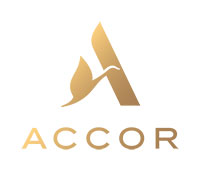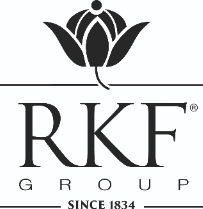Marriott International announces global growth plan through 2009; expects to add over 30% more hotel rooms
|
Marriott International announces global growth plan through 2009; expects to add over 30% more hotel rooms
|
Catégorie : Monde
Ceci est un communiqué de presse sélectionné par notre comité éditorial et mis en ligne gratuitement le 24-10-2006
Marriott plans to add 85,000 to 100,000 hotel rooms worldwide between 2007 and 2009, representing 5 to 6 percent net annual compound growth. The company expects its worldwide system to encompass nearly 600,000 rooms by year-end 2009.
• The company anticipates adding over 30,000 hotel rooms to its system outside North America at a compounded average annual growth rate of between 9 and 10 percent through 2009, totaling approximately 120,000 rooms outside North America at year-end 2009.
• Diluted Earnings Per Share, excluding the company’s synthetic fuel business, is expected to rise by a 15 to 25 percent compound annual growth rate from 2006 through 2009, assuming a REVPAR (Revenue Per Available Room) compounded average annual growth rate of 4 to 8 percent.
• At the mid-range scenario of 6 percent REVPAR growth, fees increase to approximately $1.8 billion by 2009, nearly 50 percent above 2006 levels. We estimate that 72 percent of company-managed hotels will be paying incentive management fees under this scenario.
• Assuming a 4 to 8 percent compound average annual REVPAR growth rate, as well as continued house profit margin improvements, Marriott expects aggregate net cash provided by operating activities of $3.2 billion to $3.7 billion from 2007 to 2009. With these REVPAR assumptions, Marriott expects to grow return on invested capital to the mid to high 20s in percentage terms by 2009 and to continue aggressive share repurchases.
Marriott International, Inc. (NYSE:MAR), in its first such meeting outside the United States, will tell institutional investors and security analysts in Paris today that it expects to increase the number of its hotel rooms outside of North America by more than 30 percent by the end of 2009. The company also said it anticipates diluted earnings per share (EPS) to approximate $2.45 to $3.20 by the end of 2009, excluding earnings from synthetic fuel, assuming REVPAR increases of 9 to10 percent in 2006 and compounded average annual growth rates of 4 to 8 percent from 2007 through 2009.
In a meeting focused on hotel development opportunities around the world, the company discussed unit growth expectations. In North America, Marriott plans to add 58,000 to 69,000 rooms through 2009, driven by conversions and ground-up select service hotel construction. In Marriott’s Europe, Middle East and Africa region, the company intends to expand total hotel rooms by 12,000 to 14,000 rooms, ranging between 60,000 to 62,000 by the end of 2009. Marriott’s hotel room growth in Asia is forecast to range between 11,000 and 12,000 rooms, with Ritz-Carlton accounting for almost a quarter of that increase. In the Caribbean and Latin America, Marriott plans to add 4,000 to 5,000 rooms by year-end 2009.
The company cited international expansion as one of the linchpins of its strategy.
With a less than one percent market share outside the United States, Marriott’s experienced global development engine, its proven business model of managing and franchising, and its preferred brands should drive powerful growth. Up to 60 percent of additions to the company’s full-service brands are expected to come from openings outside the U.S. and Canada.
A targeted effort to optimize Marriott’s capital structure, together with strong cash flow from operations and capital recycling, should fuel the company’s significant growth as well as aggressive stock repurchases. Year-to-date through October 16, 2006, the company has repurchased 31.8 million shares of its common stock at a cost of $1.1 billion. Its plan assumes share repurchases of between $1.25 and $1.5 billion per year between 2007 through 2009. Return on invested capital is anticipated to exceed 20 percent in 2006, ahead of earlier expectations, growing to the mid- to high-20s by the end of 2009.
J.W. Marriott, Jr., chairman and chief executive officer of Marriott International, said the increasing momentum of global economic expansion would combine with the company’s preeminent service culture and growing hotel room distribution to create tremendous new opportunities.
“The lodging industry is a global business. And three factors dominate it: global wealth, demographics and trade,” said Mr. Marriott. He noted that 3 billion people – half the world’s population – entered the global economy in the past 15 years, with the fall of the Berlin Wall and more economic growth across Asia and the Middle East, and that approximately a quarter of them were beginning to travel. He said the company is poised to capitalize on huge demographic changes, such as India’s burgeoning middle class – the size of the U.S. population – and millions of Chinese now traveling, even as Marriott continues its rapid expansion in China.
Mr. Marriott noted that the company’s world class corporate culture was not easily replicable, and would continue to pace it ahead of competitors. “Customer loyalty is driven by a strong corporate culture. Service is who we are and what we’re about, and being tops in service in a growing, global service economy is an exciting place to be,” he said.
Mr. Marriott also pointed to the 78 million baby boomers in the U.S. with $9 trillion in accumulated personal wealth to spend, and who are attracted to a similar mix of technology, style and experiences as Generation X. He noted the appeal across age groups of Marriott International’s initiative throughout its hotel system to create a home-like feel in guest rooms, as well as revolutionary new spaces in select full-service hotels using innovative technology and creative architecture and design to enable guests to work, play or relax. “There’s not a big generation gap anymore, just one big travel generation,” he said.
The company noted its plans to open 50 Courtyards in Europe. In fact, Marriott International just opened its European prototype for the Courtyard brand in Colombes, France, outside Paris.
William J. Shaw, Marriott International’s president and chief operating officer, said, “Courtyard is the company’s fastest-growing brand, and its second most profitable lodging brand after Marriott Hotels & Resorts. Courtyard is a brand with great global promise – in North America, Europe, Asia and Latin America.
“We have 67 Courtyards already open outside North America, and between now and the end of 2009, Courtyard’s expansion should nearly double the number of units in those markets.” He also said the company expected to add over 130 Courtyards in North America over the same period.
The company is providing 2009 EPS guidance under three compound average annual REVPAR growth assumptions, as follows:
REVPAR 2007-2009
TOTAL FORECASTED FEES* 2009
FORECASTED EARNINGS PER SHARE 2009
4 PERCENT
$1.640 billion
$2.45
6 PERCENT
$1.775 billion
$2.82
8 PERCENT
$1.910 billion
$3.20
* Base management, franchise and incentive management fees
Marriott’s security analyst conference is today, October 19, 2006. A webcast is available from 12:30 p.m. to 1:00 p.m., Central European Time (6:30 a.m.-7:00 a.m., Eastern Time), and from 2:30 p.m. to 6:00 p.m., Central European Time (8:30 a.m. to Noon, Eastern Time). Those wishing to access the webcast should log on to http://www.marriott.com/investor, click the “Recent Investor News” tab and click on the Analyst Meeting link. Presentation materials from the conference and an audio replay will be available on that same site indefinitely.
|
|





